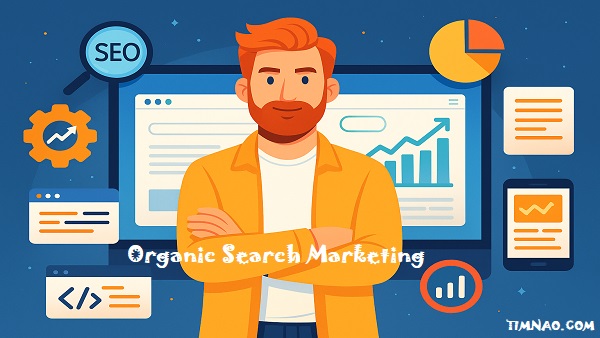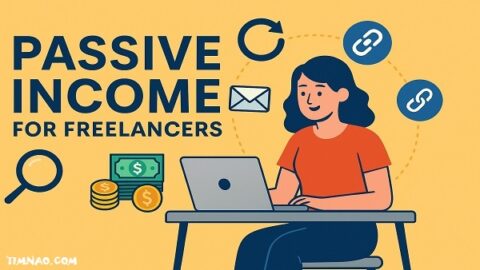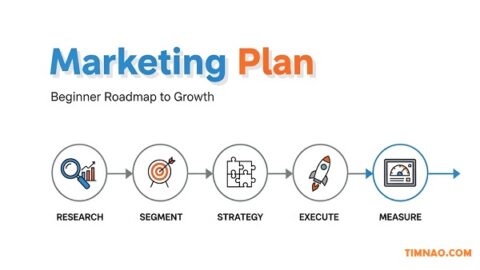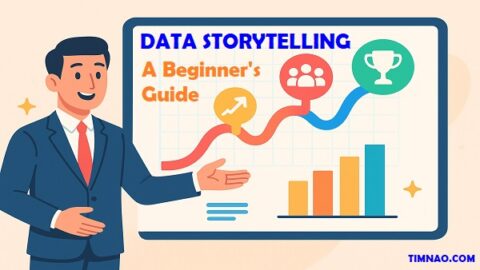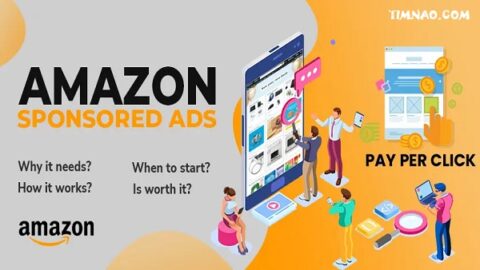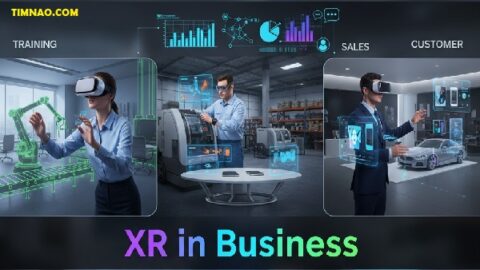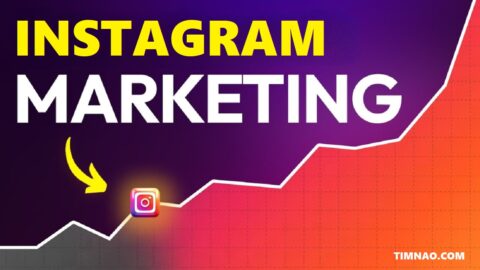🚀 Unstoppable SEO Growth: How to Win Big with Organic Search in 2025 🌟
Organic search marketing is no longer just a traffic-driving tactic—it’s the most powerful and sustainable engine for online business growth in 2025. In a world flooded with fleeting trends and expensive ads, organic visibility gives you lasting authority, qualified traffic, and higher conversion potential—all without relying on a paid media budget.
But here’s the catch: the organic game has changed. Modern SEO is no longer about stuffing keywords or chasing shady backlinks. It’s about creating value-driven content, building a technically sound website, and aligning your strategy with your customer’s journey.
Whether you’re an entrepreneur, marketer, or small business owner looking to break through the noise, this guide will walk you through exactly how to build an SEO strategy that works today—from clicks to conversions, and everything in between.
Let’s unlock the proven steps to help your website rank higher, engage better, and convert faster—starting now.
📚 Table of Contents
- 🌐 Understanding the Power of Organic Search in 2025
- 🏗️ Build a Website That Converts — Not Just Attracts
- 🔍 Smart SEO Starts with a Solid Technical Foundation
- ✍️ Content That Connects: Crafting with Strategy and Heart
- 🎯 Aligning Content to the Customer Journey
- 📢 Amplify Your Reach: Content Distribution Strategies
- 📊 From Clicks to Insights: Using Analytics to Win
- 🧪 Turning Traffic into Revenue with CRO
- 🤝 Putting It All Together: The Cohesive SEO Growth Engine
- 🚀 Next Steps: Get Started with a Sustainable SEO Strategy
🌐 Understanding the Power of Organic Search in 2025
Organic search is no longer just about getting your site ranked—it’s about winning trust, owning authority in your niche, and consistently driving high-quality traffic that converts. In 2025, businesses that treat organic search marketing as a strategic growth engine—not a side hustle—are the ones making waves.
With Google’s algorithm updates becoming more intelligent and user-centric, the old tricks (like keyword stuffing and shallow content) are long dead. Instead, winning in organic search today means understanding user intent, delivering real value, and optimizing every part of your digital presence.
Let’s be clear: Organic search is not just SEO. It’s an ecosystem—a blend of search engine optimization, strategic content creation, user-focused design, and ongoing performance measurement.
Here’s what’s trending now in 2025:
- AI-assisted search (like Google’s SGE) makes content quality and relevance more critical than ever.
- Voice and mobile search are dominating buyer research.
- E-E-A-T principles (Experience, Expertise, Authoritativeness, Trustworthiness) continue to shape rankings.
- Zero-click searches are increasing—so visibility, snippets, and SERP features are key.
The question is no longer, “Should I do SEO?”
It’s “How can I dominate with organic search?”
🏗️ Build a Website That Converts — Not Just Attracts
Your website is your 24/7 salesperson, your brand’s first impression, and your content distribution hub—all rolled into one. In 2025, a visually polished site isn’t enough. It must be built for performance and conversion from the ground up.
Here’s how to do it:
✅ Responsive Design is Non-Negotiable
With 70–80% of traffic coming from mobile devices, your site must load flawlessly on phones and tablets. Use responsive frameworks, scalable images, and mobile-first UI design.
Tip: Use Google’s Mobile-Friendly Test to audit your site right now.
🎨 Design for Visual Trust
Users form opinions in less than half a second. Use clean layouts, brand-aligned colors, professional typography, and real imagery—not stock overload. Visual trust leads to longer visits and lower bounce rates.
🎯 CTAs That Drive Action
Your Calls-to-Action should be bold, clear, and conversion-driven. Think:
- “Download Your Free Guide”
- “Get Instant Access”
- “Try It Now – No Credit Card Needed”
Don’t bury your CTAs. Place them in high-visibility zones: headers, mid-content, and end-of-page. A/B test their effectiveness with tools like Hotjar or Google Optimize.
🔄 Logical Navigation is a Game Changer
If users can’t find what they need in 2–3 clicks, they bounce. Organize menus around what users want, not what your company wants to say. Use smart internal linking and category hubs.
🔍 Smart SEO Starts with a Solid Technical Foundation
Without technical SEO, even the best content won’t rank. Technical optimization ensures that search engines can access, understand, and index your content efficiently. Here’s where to start:
🔒 Secure Your Site with HTTPS
Security is now a ranking signal. If your site isn’t HTTPS, users will see “Not Secure” warnings—and bounce. Use free SSL certificates from Let’s Encrypt or get one from your host.
🧭 Fix Crawlability & Indexing Issues
Use Google Search Console to identify:
- Broken links (404s)
- Redirect chains
- Pages blocked from crawling
- Pages that shouldn’t be indexed (thank-you pages, admin panels, etc.)
Pro Tip: Add “noindex” to non-essential pages and use canonical tags to prevent duplicate content.
⚡ Optimize Page Speed
Google prioritizes fast-loading websites. Here’s how to win:
- Compress images using TinyPNG
- Use WebP format
- Enable caching (via plugins like W3 Total Cache or LiteSpeed)
- Choose a fast host or VPS with a CDN like Cloudflare
Speed tools to check:
🧠 Add Schema & Metadata for Rich Snippets
Implement structured data with Schema.org to help Google understand your content and display it attractively in SERPs. Use:
- Article schema for blog posts
- LocalBusiness schema for local SEO
- Product & Review schema for eCommerce
Tools like RankMath or Yoast can automate much of this for WordPress users.
✍️ Content That Connects: Crafting with Strategy and Heart ❤️
At the heart of every successful SEO strategy lies one unshakable truth: great content wins.
But let’s be clear—not just any content.
In 2025, content that connects is content that serves. It’s written with purpose, speaks directly to your audience’s pain points, and offers clear solutions. Google’s algorithms have matured to favor helpful, experience-based, well-organized content that people genuinely want to read.
🎯 Understand Who You’re Writing For
Every piece of content should start with one critical question:
👉 Who is this for—and what do they need right now?
Use free tools like:
- Google Trends for topic validation
- AnswerThePublic for popular questions
- Reddit and Quora for raw audience insight
Map your audience’s:
- Demographics (age, location, profession)
- Psychographics (values, challenges, desires)
- Behavioral traits (search habits, common objections, buying triggers)
The more specific, the better. Generic content won’t rank or convert.
✨ Craft Compelling and Useful Content Formats
Use a mix of formats tailored to search intent:
- Blog posts & guides for information-seekers
- Comparison posts for decision-makers
- Case studies for social proof
- Infographics, videos, and carousels for visual learners
Keep paragraphs short (3–5 sentences), break up content with clear subheadings, and integrate visual elements like icons, bullets, or short videos. This improves time-on-page—an essential user signal.
🧠 Be Strategic with Keywords
Keyword research is still essential—but in 2025, it’s not about stuffing keywords into content. It’s about:
- Search intent matching
- Contextual relevance
- Semantic variety (using LSI keywords and phrases naturally)
Use tools like:
- Ubersuggest
- Keywords Everywhere
- Google’s “People Also Ask” box for quick-win keyword ideas
Where to place focus keywords:
- Title and H1
- Introduction paragraph
- Meta description
- One or two subheadings
- Image alt text
- Naturally throughout the body (without overusing)
✍️ Storytelling and Structure Matter
Every piece of content should follow a clear flow:
- Hook – Grab attention in the first few lines
- Value – Explain what the reader will learn or gain
- Body – Deliver the value clearly and concisely
- CTA – Tell the reader what to do next (download, share, book a call)
Even product or service pages can benefit from storytelling. Help readers see themselves using your product or service. Paint a picture. Make them feel the result.
🤖 Leverage AI (But Don’t Rely on It Alone)
AI tools like ChatGPT, Jasper, or Writesonic are great for:
- Brainstorming topic ideas
- Creating content outlines
- Drafting variations of product descriptions or meta tags
But your job is to refine what AI generates. Inject your brand voice, add original insight, and make it human. AI is a tool—not a replacement for authentic connection.
🎯 Aligning Content to the Customer Journey 🛤️
Not all content serves the same purpose. In fact, one of the biggest mistakes beginners make is publishing content without thinking about where it fits in the buyer’s journey.
Here’s how to strategically align your content with the three key stages:
🧠 Stage 1: Awareness (Top of Funnel)
Audience Goal: “I want to understand my problem better.”
Content Goal: Educate, not sell.
At this stage, people are researching symptoms of their problem—not your product or service. The best content here:
- Answers questions
- Builds trust
- Introduces your brand as a helpful expert
Examples:
- “How to Choose the Right CRM in 2025”
- “Top 10 SEO Mistakes to Avoid This Year”
- “What Is Organic Search Marketing and Why It Matters”
Use SEO-friendly listicles, explainer videos, and blog posts optimized for beginner-level keywords.
💡 Stage 2: Consideration (Middle of Funnel)
Audience Goal: “I’m exploring solutions.”
Content Goal: Position your offering as the best choice.
Now that people are aware of their issue, they’re comparing options. They need validation and clarity. Show up with:
- Product comparisons
- Solution-focused blog posts
- Case studies and testimonials
- Expert guides with deeper insights
Examples:
- “Best SEO Tools Compared: RankMath vs. Yoast”
- “How We Helped a Local Bakery Boost Organic Traffic by 3X”
Also consider adding lead magnets (PDFs, checklists, cheat sheets) in exchange for email addresses to nurture your leads further.
🔥 Stage 3: Decision (Bottom of Funnel)
Audience Goal: “I’m ready to act—but I need assurance.”
Content Goal: Eliminate friction and prompt conversion.
Here’s where your conversion copywriting comes in. This content should be sharp, persuasive, and hyper-relevant.
Examples:
- Product demos
- Sales pages
- Customer stories with measurable ROI
- Free trial landing pages
At this stage, micro-conversions also matter:
- Clicks on CTAs
- Email opt-ins
- Live chat engagement
Make sure CTAs are clear and action-oriented like:
- “Start Your Free 7-Day Trial”
- “Book a 15-Minute Demo Now”
- “Get the SEO Strategy Template”
📢 Amplify Your Reach: Content Distribution Strategies 📬
You’ve created outstanding content. Great. But here’s the catch: if nobody sees it, it doesn’t matter.
In 2025, publishing content is just half the equation. The other half? Getting that content in front of the right people, at the right time, on the right platforms.
That’s where a smart content distribution strategy becomes a game changer for your SEO strategy and overall digital presence.
🔁 Organic Distribution: SEO Meets Consistency
Organic distribution should be your first line of amplification. Why? Because SEO offers sustainable, long-term traffic that compounds over time.
Here’s how to make organic distribution work for you:
- Internal Linking: Connect new content to older high-ranking posts to transfer authority and keep users exploring.
- Republish on Medium or LinkedIn Articles: Include a canonical tag to avoid duplicate content issues.
- Answer questions on Quora or Reddit with snippets from your content, linking back to the full post.
- Update old blog posts and promote them as “new” again—Google loves freshness.
And always optimize:
- Title tags
- Meta descriptions
- Featured images
- URL slugs
These basics significantly improve click-through rates on organic listings.
💬 Social Media Distribution: Meet People Where They Scroll
Social media platforms are not just for engagement—they’re powerful search and discovery engines in their own right.
In 2025, platforms like TikTok, Instagram Reels, YouTube Shorts, and LinkedIn are increasingly where your audience discovers your content.
Here’s how to tailor your approach:
- LinkedIn: Great for B2B, repurpose blog posts into short carousels, quote graphics, and expert polls.
- TikTok & Instagram Reels: Create short-form video content highlighting quick tips from your articles.
- Twitter/X Threads: Break down long posts into bite-sized tweets and drive traffic to your blog.
- YouTube: Turn evergreen blog content into educational video guides with SEO-rich descriptions.
💡 Pro tip: Add “link in bio” tools like timnao.link/bio to simplify traffic flow from social to site.
💌 Email Marketing: Your Owned Distribution Engine
Email marketing remains one of the highest ROI distribution channels in digital marketing. Use it to:
- Share weekly roundups of your best blog posts
- Launch new guides or video series
- Offer exclusive templates or bonuses linked to your content
Segment your email list by interests and behavior so your subscribers always receive highly relevant content.
Tool recommendations:
- ConvertKit – Ideal for creators
- MailerLite – Great for small businesses
- ActiveCampaign – Advanced automations
🧱 Syndication and Communities
Syndication involves publishing your content on third-party websites to reach wider audiences. Popular options include:
- Medium
- GrowthHackers
- Business 2 Community
- Hackernoon (for tech-focused pieces)
You can also build real traction by becoming active in communities like:
- Facebook Groups related to your niche
- IndieHackers, Product Hunt, or Slack communities
- Discord channels for your target vertical
The goal? Show up with value, drop links sparingly, and grow relationships—not just clicks.
💰 Paid Boosts for Strategic Wins
While organic search marketing is your long game, a little paid push can go a long way—especially for high-value assets like lead magnets or long-form guides.
Budget-friendly ad strategies:
- Boost top-performing Facebook/Instagram posts for under $50
- Run YouTube in-feed ads targeting specific search terms
- Use Google Ads’ Performance Max to retarget visitors who didn’t convert
Use UTM parameters to track results in Google Analytics, so you know what’s worth scaling.
📌 Key Distribution Tips for Beginners
- Don’t promote content once—promote it 5–10 times in different formats over weeks.
- Use a simple content calendar to schedule posts across multiple platforms.
- Create a content repurposing system: one blog = a Twitter thread, carousel, short video, and quote image.
- Focus distribution on where your target customer already hangs out.
Remember, visibility drives traffic, and traffic feeds your conversions. Distribute with intent, consistency, and creativity—and the SEO benefits will follow.
📊 From Clicks to Insights: Using Analytics to Win 📈
SEO isn’t set-and-forget. To win, you need to constantly analyze what’s working, what’s not, and where you should double down.
Luckily, tools like Google Analytics 4 (GA4) and Google Search Console give you everything you need to track, tweak, and triumph.
🎯 Set SMART KPIs (Key Performance Indicators)
Without clear goals, data is just noise. Start with simple, trackable SEO-focused KPIs like:
- Organic traffic growth
- Bounce rate
- Click-through rate (CTR)
- Time on page
- Pages per session
- Conversion rate from organic traffic
For local SEO, monitor Google Business Profile metrics like direction requests, website clicks, and call volume.
🧭 Use GA4 to Understand User Behavior
Google Analytics 4 is event-based, meaning every scroll, click, and video view can be tracked.
Beginner-friendly insights to look for:
- Which blog posts keep people engaged the longest?
- Which CTAs get clicked most often?
- Where do users drop off in the funnel?
Pro Tip: Use “Exploration” reports in GA4 to uncover hidden patterns, like which devices perform best or which landing pages convert.
🔍 Leverage Google Search Console for SEO Insights
GSC helps you improve performance in Google Search. Here’s what to track:
- Top search queries bringing you clicks
- Pages with declining impressions (update them!)
- Mobile usability issues
- Core Web Vitals performance
Fixing even minor issues here can lead to major wins in rankings and visibility.
🧪 A/B Test to Refine Strategy
Want to boost your conversion rate from 1% to 3%? That’s a 3x growth in leads or revenue—with the same traffic.
Start simple:
- Test two different blog titles
- Try new CTA button placements or colors
- Split-test landing page copy
Use tools like:
- Google Optimize (sunsetting soon, but alternatives like VWO work)
- Optimizely
- Hotjar for click heatmaps and session recordings
📈 Analytics don’t just show you what happened—they help you optimize what comes next.
🧪 Turning Traffic into Revenue with CRO 💸
So you’ve got traffic—awesome. But here’s the brutal truth:
Traffic alone doesn’t pay the bills. Conversions do.
That’s why Conversion Rate Optimization (CRO) is the not-so-secret weapon in any winning SEO strategy. In 2025, CRO is about refining the user experience to turn more visitors into leads, sign-ups, or customers—without spending a dime on more ads.
Let’s break down how to make CRO work for you.
🛠️ What Is CRO (and Why It Matters)?
CRO is the art and science of improving your website so more visitors take action. Whether it’s subscribing to a newsletter, booking a demo, or buying a product, CRO focuses on removing friction and guiding behavior.
It’s how you squeeze more value from every SEO-driven visitor.
Even a 1% improvement in conversion rate can lead to massive gains—especially when your organic search marketing starts driving thousands of new visitors.
🔍 Identify Your Website’s Bottlenecks
Use tools like:
- Hotjar or Microsoft Clarity to see where users click, scroll, or drop off.
- Google Analytics 4 funnel reports to see where traffic leaks.
- Page speed tools to fix loading delays that kill conversions.
Ask:
- Are your CTAs obvious and compelling?
- Are users getting lost or confused?
- Are your forms too long or intimidating?
- Is your value proposition crystal clear above the fold?
🎨 Design for Conversions, Not Just Beauty
Here’s what high-converting pages always have:
- A strong value-driven headline (“Get More Traffic Without Ads”)
- Clear, contrasting CTAs (“Download the Checklist”)
- Proof elements (testimonials, ratings, case studies)
- Trust builders (SSL, money-back guarantees, secure badges)
- Mobile-optimized layouts with fast loading
Test small. Test often. Iterate fast.
🔁 CRO Tools to Get Started
- Unbounce – Great for landing page testing
- VWO – Visual A/B testing without coding
- ConvertKit – To test email capture and automation flows
- RankMath – Helps track content performance right inside WordPress
Focus on one conversion goal per page—no mixed messages, no clutter. Drive clarity, not confusion.
🤝 Putting It All Together: The Cohesive SEO Growth Engine ⚙️
By now, you understand that effective SEO isn’t just about content or keywords. It’s about how every part of your digital strategy works together to create real momentum.
Here’s how to create a self-sustaining, compounding SEO engine in 2025:
🔄 Start with Strategic Foundations
- Build a conversion-optimized website that serves users first
- Set up a strong technical SEO baseline (SSL, speed, schema, crawlability)
- Create content with purpose, empathy, and clarity
These pillars ensure you’re not just chasing rankings—but building long-term value.
✍️ Map Content to Intent and Journey
- Awareness = educational blogs, infographics, social posts
- Consideration = case studies, comparisons, how-to guides
- Decision = landing pages, demos, testimonials, CTAs
Pro tip: Use one primary keyword cluster per piece, aligned with the user’s intent.
📢 Promote Smart, Not Just Hard
Distribute your content where your audience already is—social, communities, newsletters. Reuse, repurpose, repeat.
Then, back it up with:
- Consistent posting
- Lead capture mechanisms
- Remarketing to warm traffic
📊 Optimize Relentlessly
- Use GA4 and GSC to track what’s working
- Update content every 3–6 months
- A/B test top landing pages
- Prioritize user experience over trends
This iterative mindset is what turns a good SEO strategy into a growth engine.
🚀 Next Steps: Get Started with a Sustainable SEO Strategy 🎯
Ready to start winning with organic search marketing in 2025?
Here’s a simple action plan to help beginners get started today:
✅ Step 1: Audit Your Website
Use free tools like SEO Site Checkup or Screaming Frog to find issues like:
- Broken links
- Missing alt text
- Non-secure pages
- Slow loading speed
Fix the basics first.
✅ Step 2: Create a Keyword and Content Plan
Start with 10 high-impact keywords related to your niche. Use Ubersuggest or Ahrefs Free Tools.
Then write content that aligns with:
- What your audience is searching for
- Where they are in the journey
- Your product or service strengths
✅ Step 3: Promote and Track
- Share content consistently
- Build backlinks slowly and naturally
- Use Google Search Console and GA4 to measure and iterate
- Make small CRO improvements monthly
🎉 Final Tip: Be patient but persistent. Organic SEO is a snowball—it starts slow but grows fast with consistency.
In 6–12 months, your organic traffic could become your #1 growth channel.

